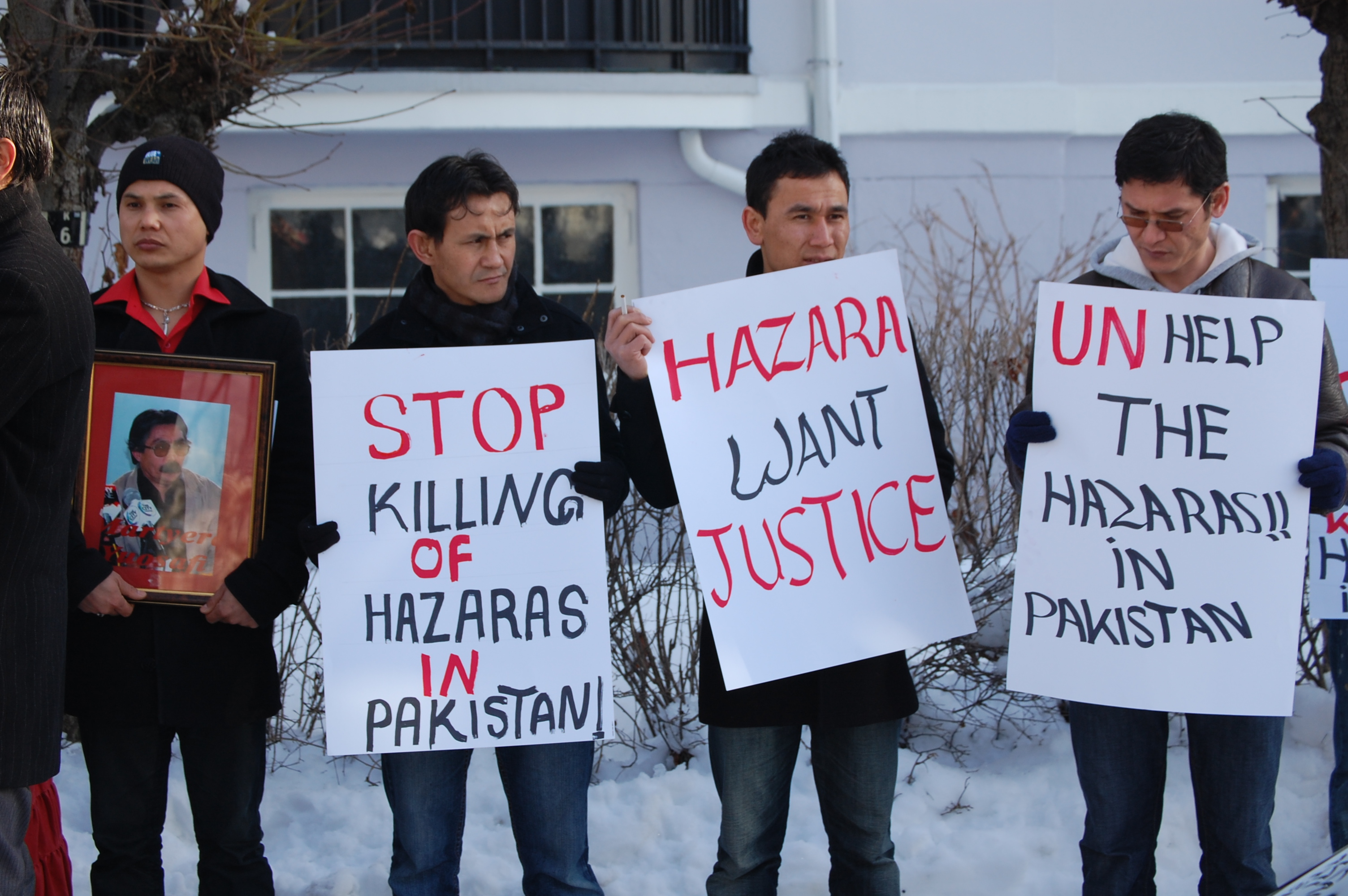Hazaras Gunned Down In Quetta
norway-oslo-hazaras-protest-hussainaliyusufis-assassination-quetta-pakistan

NEW DELHI: Unidentified gunmen killed eight and injured six others belonging to Pakistan’s minority Hazara ethnicity in Hazar Ganji area of Quetta, the capital of the restive Balochistan province.
Attacks against Hazaras -- a Shia minority -- are becoming commonplace in a deeply intolerant Pakistan.
In fact, an Human Rights Watch (HRW) report released a few months ago said that the half-million members of the Hazara community in Quetta live in fear, compelled to restrict their movements, leading to economic hardship and curtailed access to education and employment, the report says. This oppressive situation has prompted large numbers of Hazara to flee Pakistan for refuge in other countries.
Previously, HRW recorded at least 450 killings of Shia in 2012, the community’s bloodiest year; at least another 400 Shia were killed in 2013. While sporadic sectarian violence between Sunni and Shia militant groups has long persisted in Pakistan, attacks in recent years have been overwhelmingly one-sided and primarily targeted ordinary Shia going about their daily lives.
The Hazara in Balochistan, numbering about half a million people, find themselves particularly vulnerable to attack because of their distinctive facial features and Shia religious affiliation. More than 500 Hazaras have been killed in attacks since 2008, but their precarious position is reflected in the increasing percentage of Hazara among all Shia victims of sectarian attack. HRW notes that approximately one-quarter of the Shia killed in sectarian violence across Pakistan in 2012 belonged to the Hazara community in Balochistan. In 2013, nearly half of Shias killed in Pakistan were Hazaras.
Shias constitute 20 percent of the national population. In January 2014, a bomb targeting a bus of Shia pilgrims returning from Iran in Pakistan’s troubled Balochistan province, resulting in 22 casualties, was a recent reminder of the erosion of the country’s plural fabric.
According to a 2014 HRW report, 400 Shias were killed in 2013 in targeted attacks across Pakistan. At least 200 Shias, mostly from the Hazara community, were killed in Balochistan in and around the provincial capital of Quetta. In January 2013, a suicide bomb killed 96 Hazaras and injured at least another 150. In February 2013, a bomb in a vegetable market in Quetta’s Hazara town killed 84 and injured 160. In March 2013, 47 Shias were killed and 135 were injured in Karachi when a Shia-majority neighbourhood was targeted.
It is not just Shias that are targeted. Ahmadis -- who consider themselves Muslim, but are categorised as non-muslim under the constitution for disputing the claim that Prophet Muhammad was the last messenger of Islam -- face routine attacks. The community has been banned from mosques in Lahore as groups accused them of “posing as Muslims.”One of the most violent attacks against the Ahmadis was in 2010, when Taliban insurgents attacked two Ahmadis mosques in Lahore killing more than 85. In addition to violent attacks, the minority sect is often targeted by the use of the blasphemy law against them, a recent example being the arrest of Masood Ahmad, a member of the Ahmadi sect, after he was secretly videoed reading a translation of a verse from the Quran earlier this year.
Non Muslim minorities are also targeted. In March 2013, several thousand Christians were forced to flee their homes in Lahore following allegations of blasphemy against a local resident, Sawan Masih, as a mob of thousands looted and burned homes and churches. In September 2013, a suicide bombing during Sunday Mass at a Church in Peshawar killed 81 people and wounded more than 130.
These attacks are the basis of reports that indicate that sectarian violence is increasing in Pakistan. A report by the Pakistan Institute of Peace Studies (PIPS), the “Pakistan Security Report 2013” traces this rise in sectarian violence to 2011, from when it has steadily increased every year. According to a database maintained by the South Asian Terrorism Portal (SATP), although the incidents of sectarian violence attacks have declined in Pakistan, the lethality of attacks have increased leading to more deaths. SATP recorded 128 sectarian attacks, resulting in 525 deaths in Pakistan through 2013, as compared to 173 such attacks and 507 killed in 2012, demonstrating a substantial rise in lethality, from 2.93 to 4.11 fatalities per attack.
The problem with data sets relating to violence in Pakistan is that they are largely provisional based on newspaper reports, and hence, there is variation in the numbers. That said, the security situation in Pakistan does seem to be reflecting a dangerous trend toward the worse, no matter which data set is employed in the analysis.



